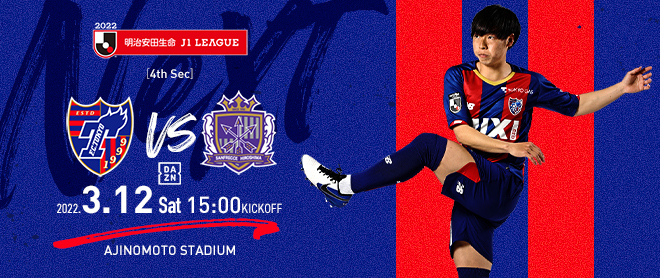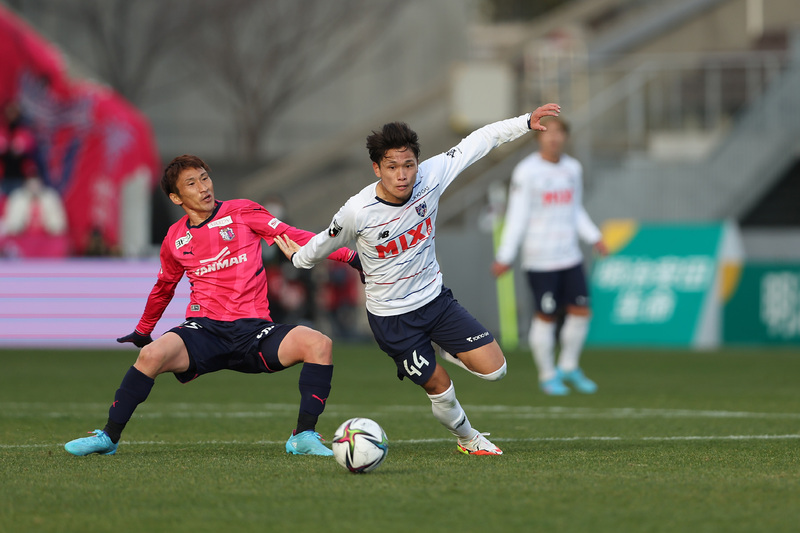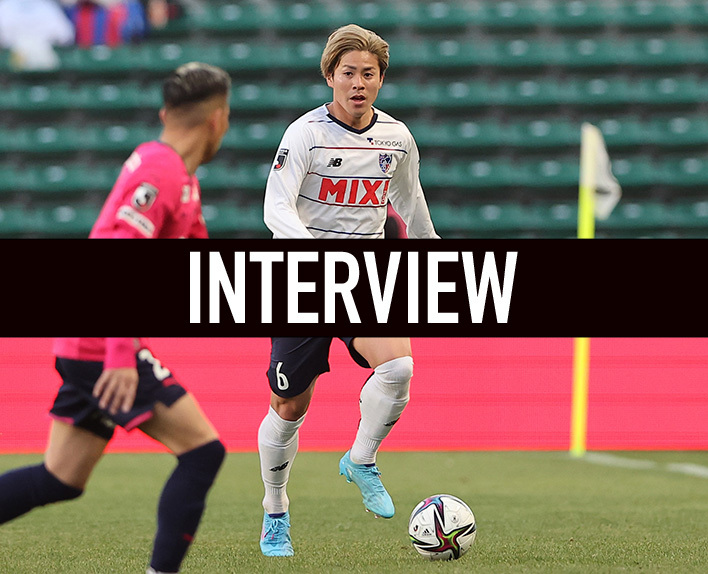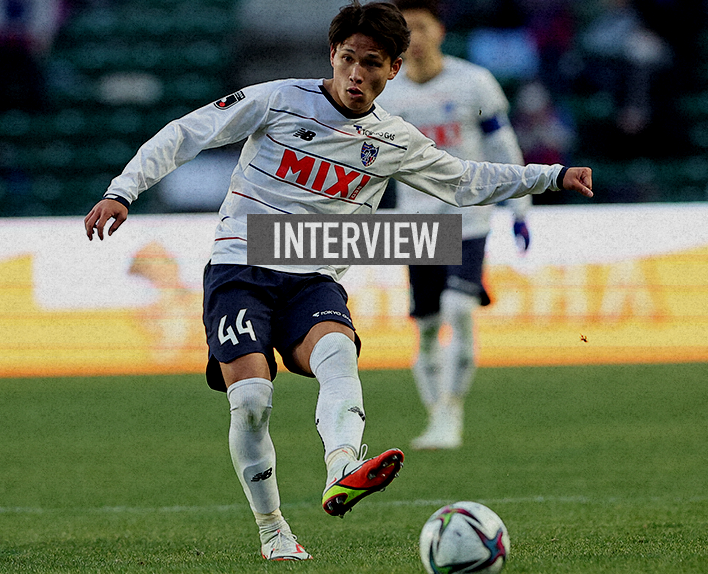Better late than never vs Make haste slowly
Peel off or be eaten --.
It may be a series of thrilling offensive and defensive battles. This will be the "FC Tokyo vs Sanfrecce Hiroshima" match held at Ajinomoto Stadium this weekend on March 12 (Sat). They are a contrasting opponent to Albert Tokyo. The team designs are significantly different.
In Tokyo, it's better to take the long way around.
Hurry up in Hiroshima.
The stances of both sides are almost completely opposite. Not only Tokyo, but Hiroshima has also appointed a new coach this season, aiming for a major shift in their game model. Fast. In any case, fast. Both in attack and defense.
The lifeline is the transition honed from camp. It is the switch from offense to defense and from defense to offense. There, we take the initiative and plan to strike decisively with a sharp fast attack. It is a style of play that swallows the enemy with high-tempo offense and defense.
This new approach is a major trend in modern Germany. It is a high-intensity football developed by some of the best coaches of our time, such as Jürgen Klopp (Liverpool manager) and the professor Ralph Rangnick (Manchester United manager). The newly appointed German coach of Hiroshima, Michael SKIBBE, is a loyal follower of this style.
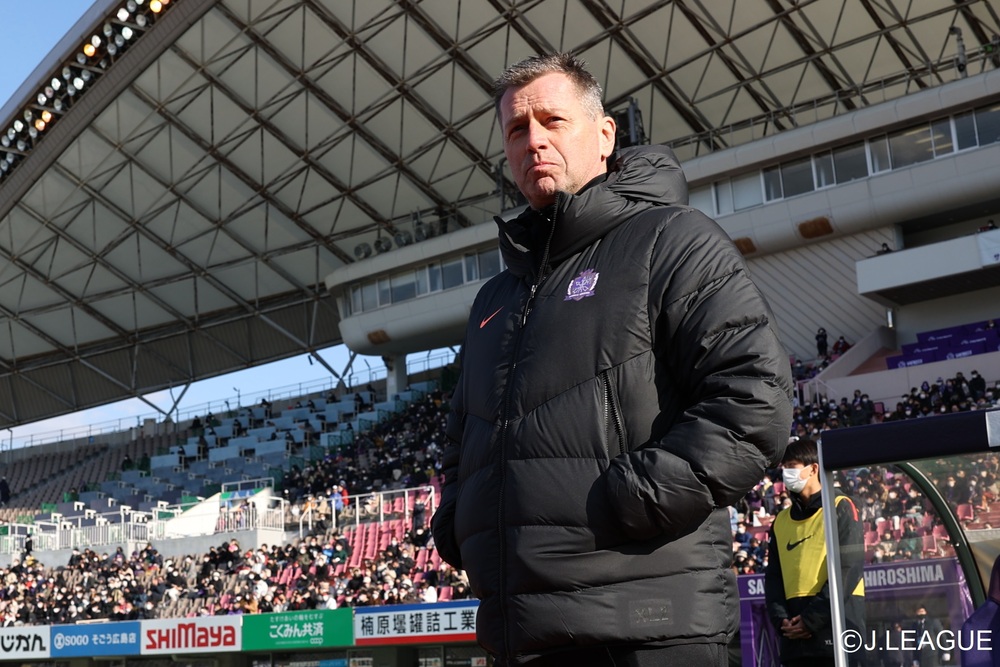
Perhaps the biggest highlight will be Tokyo's skillful possession, connecting passes from the back, and Hiroshima's intense pressing attempting to disrupt it. The initial question of whether to break through or be consumed refers to this battle.
Hiroshima's dangerous press consists of two types. The counter-press aims for immediate recovery of lost balls, while the high press steps into the opponent's territory to fundamentally disrupt the attacking side's build-up. For the former, it might be clearer to refer to it as 'Gegen-Pressing' in German.
For Tokyo, the latter may be more troublesome. In particular, the first 15 minutes when Hiroshima comes at full throttle is crucial. If they miscalculate the risks, a pitfall awaits where a lost ball can lead to an immediate goal.
The key is the four backs and the pivot (anchor) that control the build-up, but Takuya AOKI, who received a red card (two warnings) in the last match against Cerezo Osaka, is suspended for the first win of the season. Instead, the performance of "Mr. X" who will serve as the pivot will likely be a focal point. Without his contribution, avoiding the press will be difficult.
In other words, depending on the pivot's movements, Tokyo can gain an advantage. Looking at the previous match against Vissel Kobe, which ended in a 1-1 draw, there are gaps in Hiroshima's ability to contain the pivot. When attempting to press from the front line, it is unclear who will catch the pivot. In fact, there were several instances where the checks on Vissel Kobe's Sergi SAMPER were delayed, resulting in missed opportunities to disrupt their build-up play.
However, Hiroshima's press is fast and sharp. They are unafraid to chase twice, and while coordinating with the movements of the front line, the backline firmly sets up a net. Once they win the ball, they immediately launch a vertical pass and initiate a high-speed counterattack, leaving no room for complacency.
Tokyo's new focus is on positional play, but it takes a considerable amount of time for each player to take the appropriate position. Before that, the strategy is to crush the opponent with quick pressing—this is Hiroshima's style. The battle over "space and time" is likely to significantly influence the outcome of this match.
If Hiroshima makes adjustments to contain the pivot, there is a possibility they will stick to a "numerical press" that closely marks players man-to-man from near the ball. This was the case in Sec. 2 (1-1) against Hokkaido Consadole Sapporo.
In that case, what will Tokyo do? Of course, it depends on the situation, but utilizing long balls may be key. The target is behind the defensive line, specifically behind the wing-backs. Kobe has been sending long balls there to establish a base and score the opening goal. They have turned the aggressive pressure from Hiroshima to their advantage.
It would be interesting to launch a diagonal pass aimed at the wide wings from the center back. In the match against FC Osaka, Yasuki KIMOTO at the back sent a sharp diagonal pass to Adailton waiting wide on the left, leading to a quick attack. Additionally, regardless of the position he plays, Masato MORISHIGE also has the ability to deliver quality long balls. With that, I want to utilize wide receivers like Adailton and Kazuya KONNO, who scored the crucial winning goal against FC Osaka, as well as speedster Kensuke NAGAI.
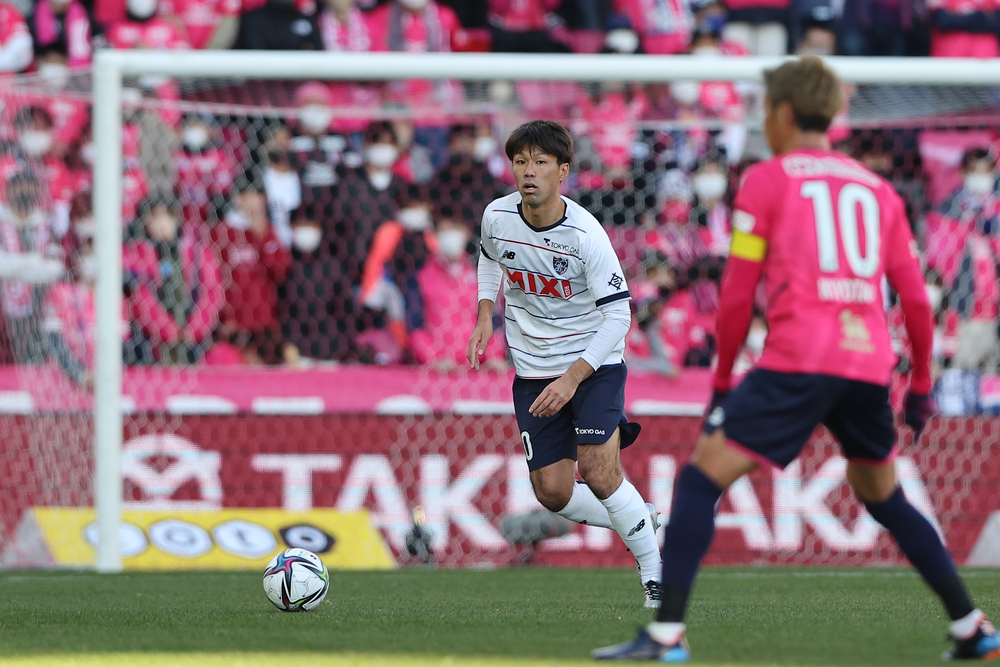
However, abuse plays into Hiroshima's hands. Long balls do not always reach teammates perfectly. In many cases, including loose balls, they are recovered by the defensive side. This repetition does not create the rhythm of attack that Albert Tokyo intends. Whether to connect or to kick will likely become crucial.
In any case, it's a contrasting scenario of Tokyo holding the ball and Hiroshima scheming to regain it. However, there is an undeniable sub-theme lurking in this match: the immediate recovery of the lost ball. It's not Hiroshima, but Tokyo's.
Although the approach differs once we switch to offense, the principles remain the same when we are on defense. We quickly transition, fight fiercely for the ball, and pick up loose balls. For Albert Tokyo, strong defense is a lifeline.
Connecting passes from the back while pushing deep into the opponent's territory, attempting immediate recovery of the ball if lost, and then attacking again. The style of play that does not give the opponent a chance to counterattack and relentlessly presses forward is what Coach Albert PUIG ORTONEDA aims for. No matter how impressive the attack is, it cannot succeed if the defense is full of gaps.
Tokyo is also a group armed with counter-pressing. Leading the midfield is Shuto ABE, surrounded by skilled practitioners of high-intensity pressing. Notably, despite being a newcomer, Kuryu MATSUKI has carved out a place in the midfield and has been named a starter since the opening match. His strengths go beyond just technique and attacking sense; he also moves brilliantly as a vanguard of the press.
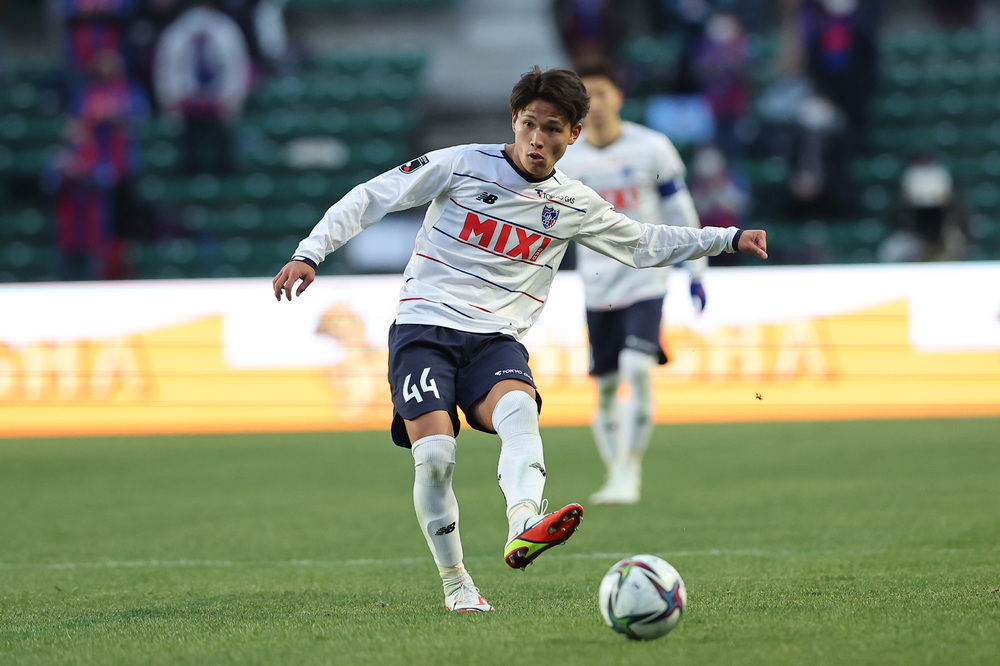
The match against FC Osaka was like that. Sharp pressing from Matsuki created chances multiple times. Strong in duels, even against seasoned warriors, he consistently wins the ball back, which is impressive. In this match against Hiroshima as well, he should be a key player for Tokyo, both in attack and defense.
On the other hand, Hiroshima also has a main cast in the second line (shadow). It is Tsukasa MORISHIMA. His movements are unpredictable and versatile. When on the attack, he acts as a receiver between the lines to draw out vertical passes, and when on defense, he is at the forefront of pressing, moving brilliantly. If you let this player roam free, it could be fatal. The performances of Matsuki and MORISHIMA will make this a match to watch closely.
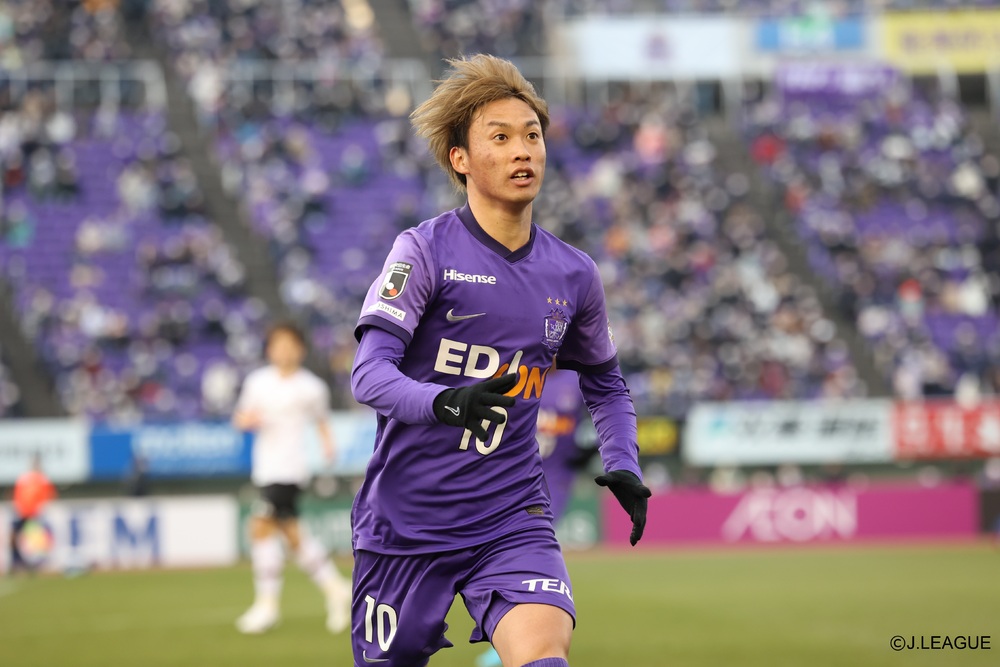
Both teams have just attempted to implement a new game model. It's a clash in the midst of development. Which team's style will stand out more? Build-up play versus high press, possession versus counter, positional play versus transitional play, Matsuki versus Morishima... There are plenty of highlights to look forward to, from tactical aspects to the competition among key players. Will they tear apart or be devoured? The fierce battle between these contrasting teams is about to begin.
Text by Satoshi Hojo (Football Writer)
Sec. 3 FC Tokyo vs Cerezo Osaka Highlights
Sec. 3 Sanfrecce Hiroshima vs Vissel Kobe Highlights
